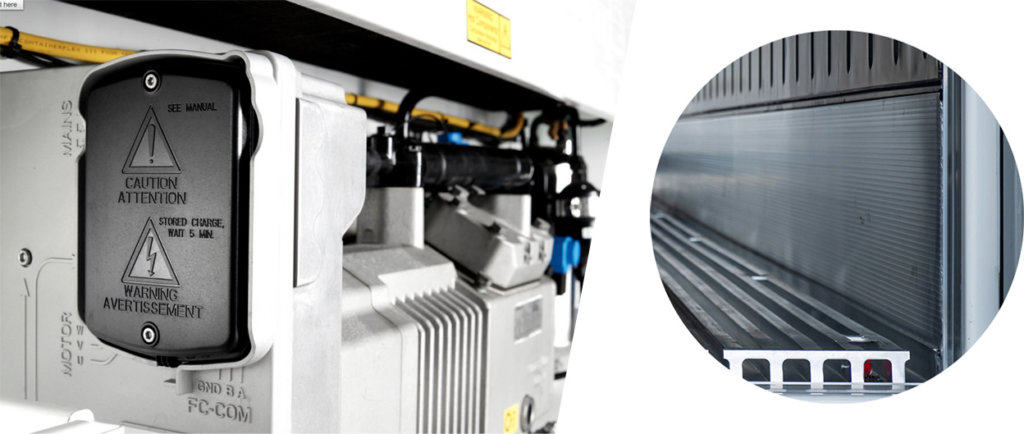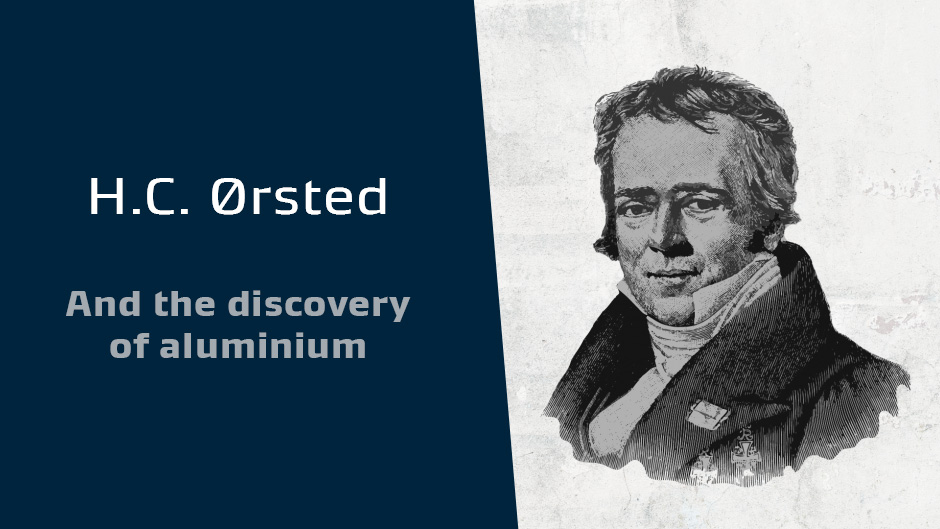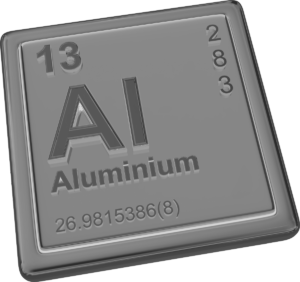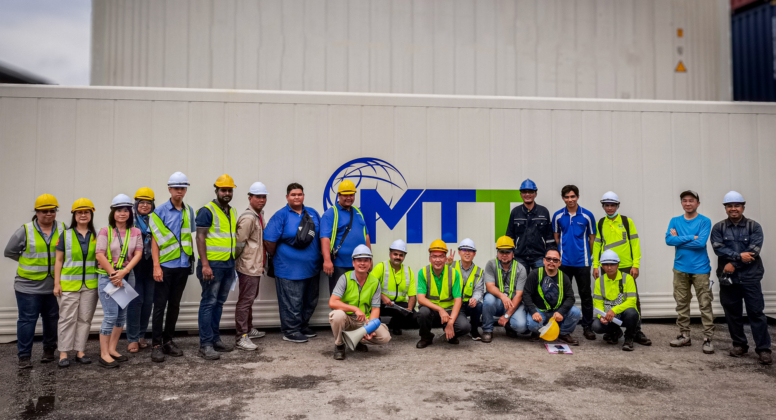Aluminum & the Danish Connection
Aluminum is as ubiquitous as – well – the common beverage can. Lightweight, durable, recyclable, aluminum is a part of our daily lives in more ways than many of us may realize.
From an engineering perspective, aluminum has been integral in the development of fuel-efficient vehicles and aircraft. Its applications range from everyday use (tin foil) and the aforementioned tin can to the wiring of power grids and the lightweight body of modern smart phones to the outer shell of the international space station. Whether we know it or not, aluminum has helped shape our modern world in a relatively short span of time.
In the early days of reefer container design, aluminum comprised a significant part of the reefer box construction. Today it’s still used for the T-floor, inner scuff liner and roof lining, as well the Star Cool compressor – providing low weight and corrosion resistance to the marine environment. These developments have allowed for lighter, stronger and more energy efficient reefer boxes.

History of aluminum
While aluminum is a naturally occurring element – the third most common in the Earth’s crust and the most abundant metal on Earth – it’s propensity of bonding easily to other elements means that it isn’t found in nature as a pure metal.
In 1825 famed Danish physicist and chemist, Hans Christian Oersted, made a significant contribution to chemistry and the world by producing aluminum in a near-pure form for the first time. In 1808, Humphry Davy had predicted the existence of the metal which he gave the name of alumium. However, his attempts to isolate it using electrolysis processes were unsuccessful. The closest he came was an aluminum-iron alloy. Oersted was the first to isolate the element via a reduction of aluminum chloride. Although the aluminum alloy he extracted still contained impurities, he is credited with discovery of the metal.
While Oersted’s discovery of aluminum is considered not much more than a footnote in his annals – he is best known for his discovery that electric currents create magnetic fields, which was the first connection found between electricity and magnetism. Oersted’s law and the oersted (Oe) are named after him – scientists spent the next 60 years searching for better ways to extract pure aluminum. Because of the complexities of refining aluminum from ore, aluminum was considered rarer and more precious than gold or silver through most of the 19th century.

France’s Emperor Napoleon III was an early proponent of aluminum. He hoped the lightweight metal could be used to produce weapons and armor, giving his soldiers an edge in battle. The emperor funded the work of Henri Sainte-Claire Deville, who found a chemical method for obtaining pure aluminum, but it was still a slow process. History tells the story that Napoleon III was so frustrated with progress on aluminum he had much of France’s stock melted down and turned into cutlery. While he and his honored guests used aluminum utensils, everyone else at the imperial dinner table made do with gold.
In 1884, when the Washington Monument (U.S. national monument to first president, George Washington) was completed, it was capped with a large casting of aluminum. The capping ceremony and the dedication of the monument were given front-page coverage in the nation’s newspapers and the aluminum point (or apex) was described in glowing detail.
At the time, a pound of aluminum was worth US$16 (about US$425 in today’s dollars). Two years later, a commercially viable method for purifying bauxite ore and extracting aluminum was discovered by Austrian chemist Carl Joseph Bayer. By 1889 the price had fallen to US$2 per pound. Within 10 years of commercial refining, it plummeted to just US 50 cents a pound (about US$13 in today’s dollars). The modern production of aluminum metal is based on the Bayer and Hall–Héroult processes.
The availability of aluminum at the turn of the 20th century spurred on the age of flight and the Space Age. In 1903, Wilbur and Orville Wright were struggling with the design of their first aircraft, the one that would go on to make history. A collaborator suggested using an alloy of aluminum and copper for the block of their four-cylinder engine. The 180-pound engine — 20 pounds lighter than designed, thanks to the aluminum — exceeded expectations and let the Wright Flyer take off. While the rest of the Wright Brothers’ plane was made of wood and fabric, by the end of the 1920s aluminum made an obvious choice for the fuselage of ever faster planes.
Aluminum became the dominant metal in aviation. Recycling it was cheaper and less time-consuming than refining it from ore. So, during World War II Americans were encouraged to turn in their aluminum cooking pots and even aluminum foil from gum wrappers and cigarette packs, to help with the war effort.
NASA also turned to aluminum alloys for Apollo for the same reason that they had been so indispensable for airplanes — weight and strength. Aluminum and aluminum alloys continue to be an important component in 21st century space craft – including Elon Musk’s Spacex project.
And as for the ubiquitous aluminum beverage can, that history dates to 1959. American beer-maker Coors was the first to use the aluminum drink can, both for its inert impact on the taste of the beer and to promote a culture of recycling. At first, cold beer in aluminum cans got a lukewarm reception. However, by the mid-1960s, the new can had really started to catch on, even among Coors’ competitors.
Atlanta-based Novelis, which is today the world’s largest producer of sheet aluminum for cans, says more than 60% of the aluminum it produces is recycled — and most of that comes from and goes back into cans. According to Novelis, recycling aluminum takes only about 5% of the energy used to produce new metal. Meaning the carbon footprint from a beverage can is smaller than it would be if the aluminum was extracted from ore.

The Danish connection
We can thank a Danish scientist for making aluminum a part of our everyday life and the life of our industry. Hans Christian Oersted went on to be elected a foreign member of the Royal Swedish Academy of Sciences in 1822 and a Foreign Honorary Member of the American Academy of Arts and Sciences in 1849. He founded Selskabet for Naturlærens Udbredelse (SNU), a society to disseminate knowledge of the natural sciences, in 1824. He was also the founder of predecessor organizations which eventually became the Danish Meteorological Institute and the Danish Patent and Trademark Office. In 1829, Oersted founded Den Polytekniske Læreanstalt (‘College of Advanced Technology’) which was later renamed the Technical University of Denmark.
The buildings that are home to the Department of Chemistry and the Institute for Mathematical Sciences at the University of Copenhagen’s North Campus are named the H.C. Oersted Institute, after him. A dormitory named H. C. Oersted Kollegiet is located in Odense. The first Danish satellite, launched 1999, was named after Oersted. After more than twenty years in orbit, the Oersted satellite is still operational, and continues to downlink accurate measurements of the Earth’s magnetic field.
The spirit of ingenuity continues on at MCI, where the research and development team take a cue from their famous Danish predecessor striving towards greater efficiency, reliability and innovation.


